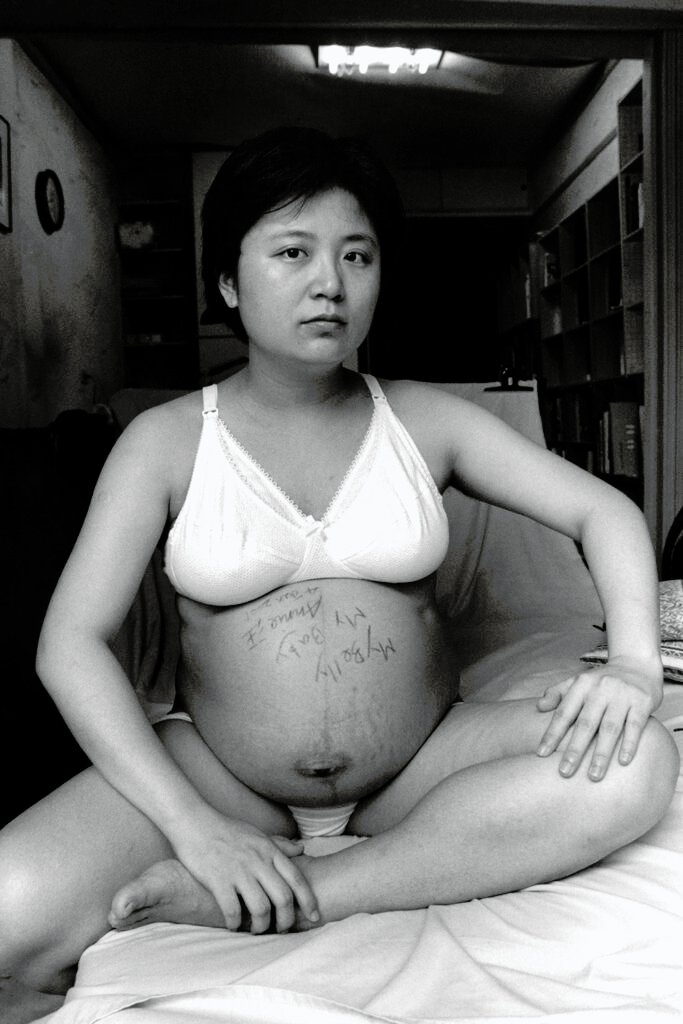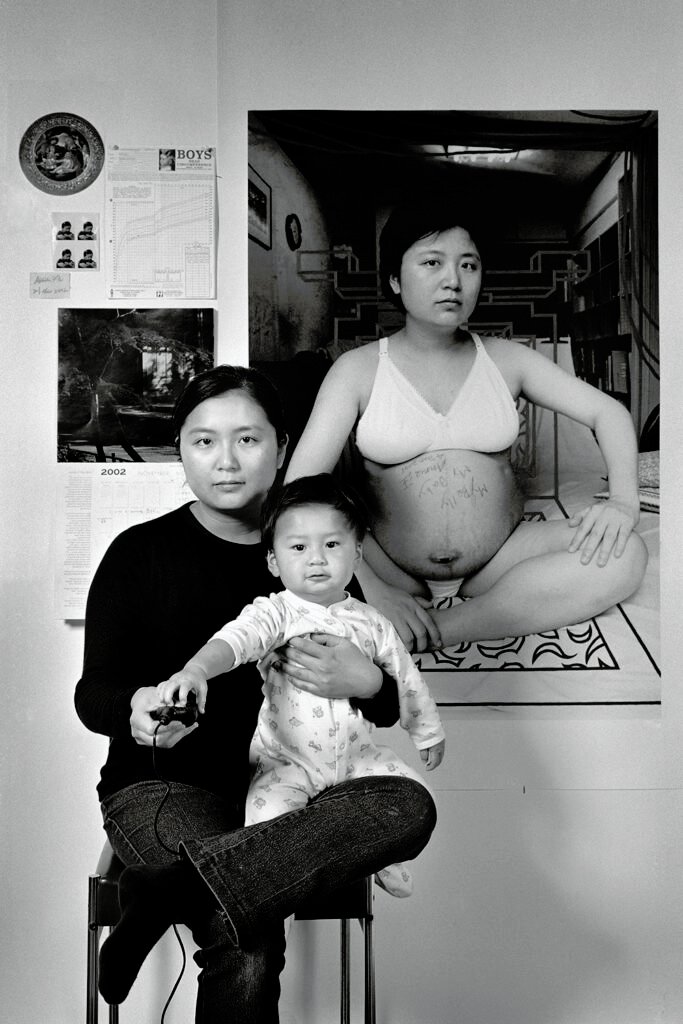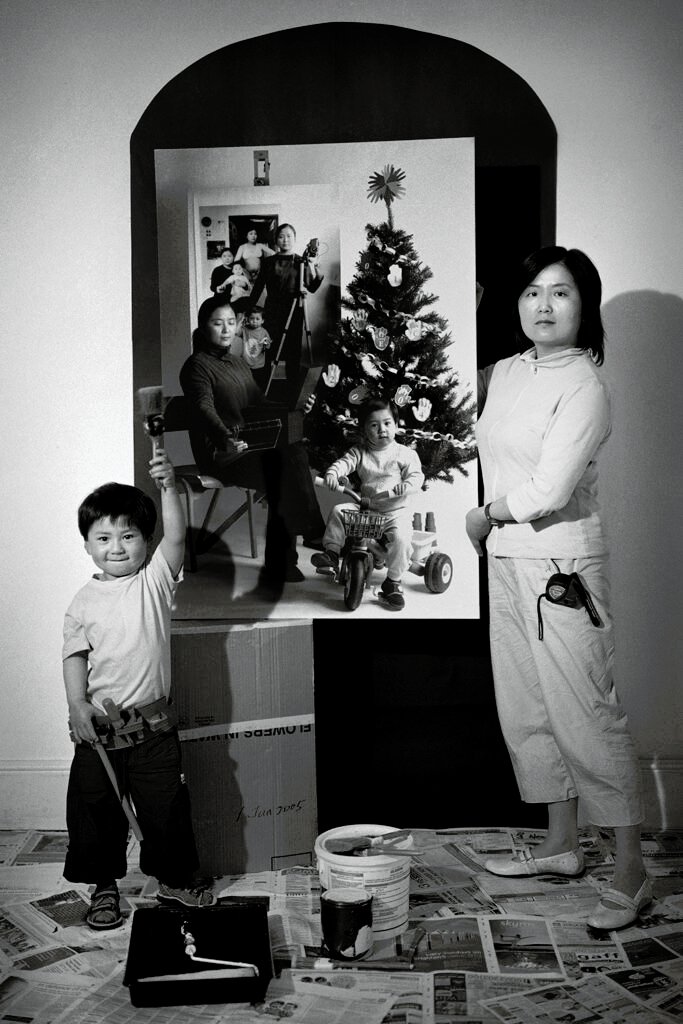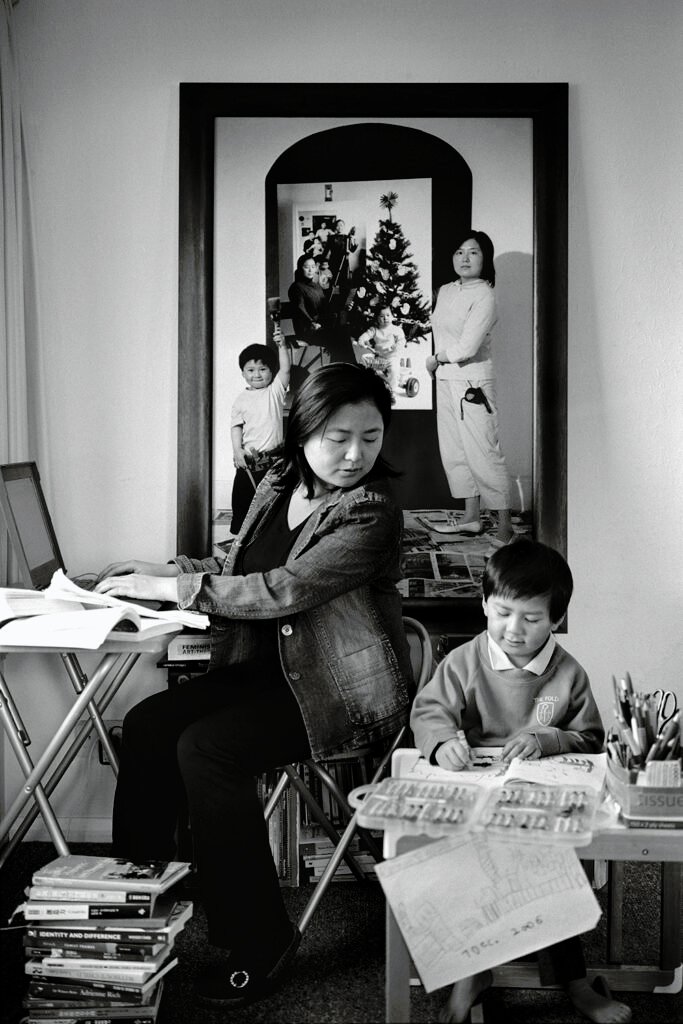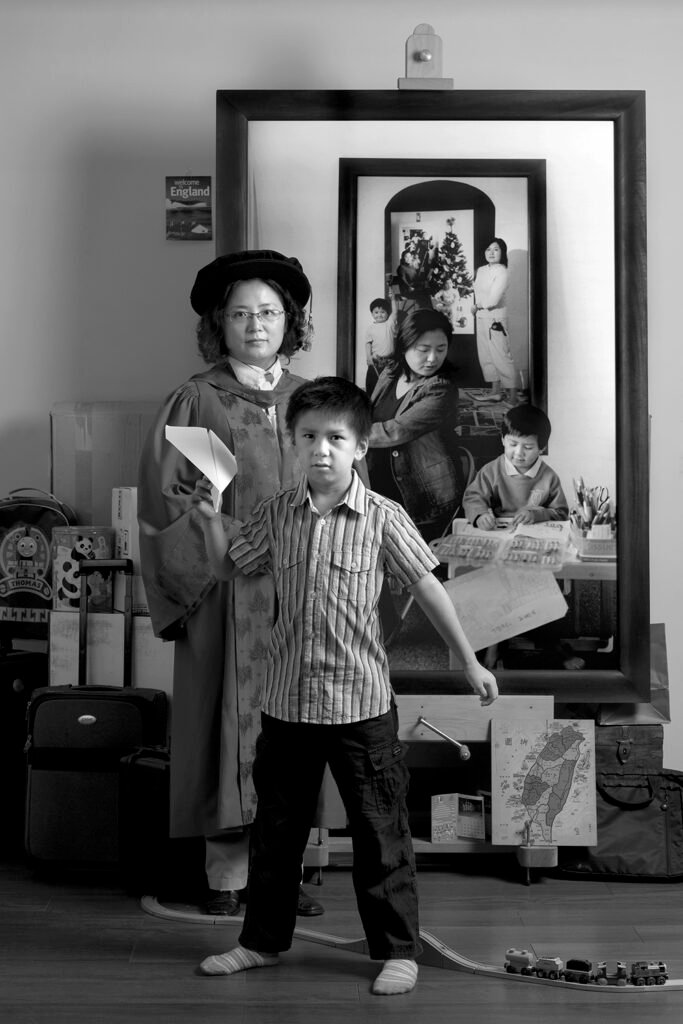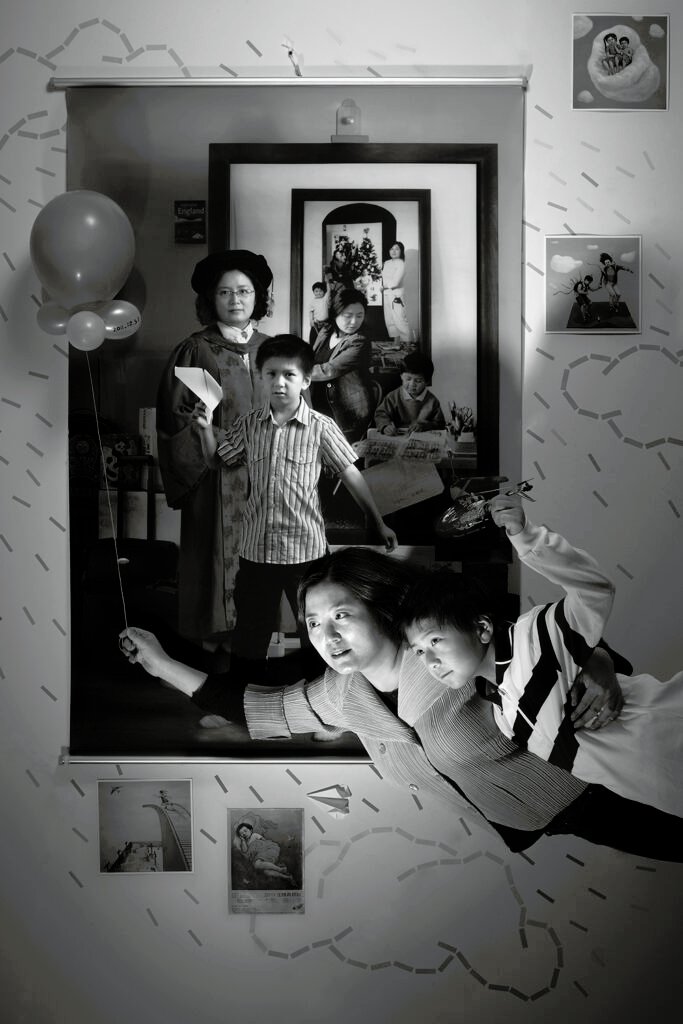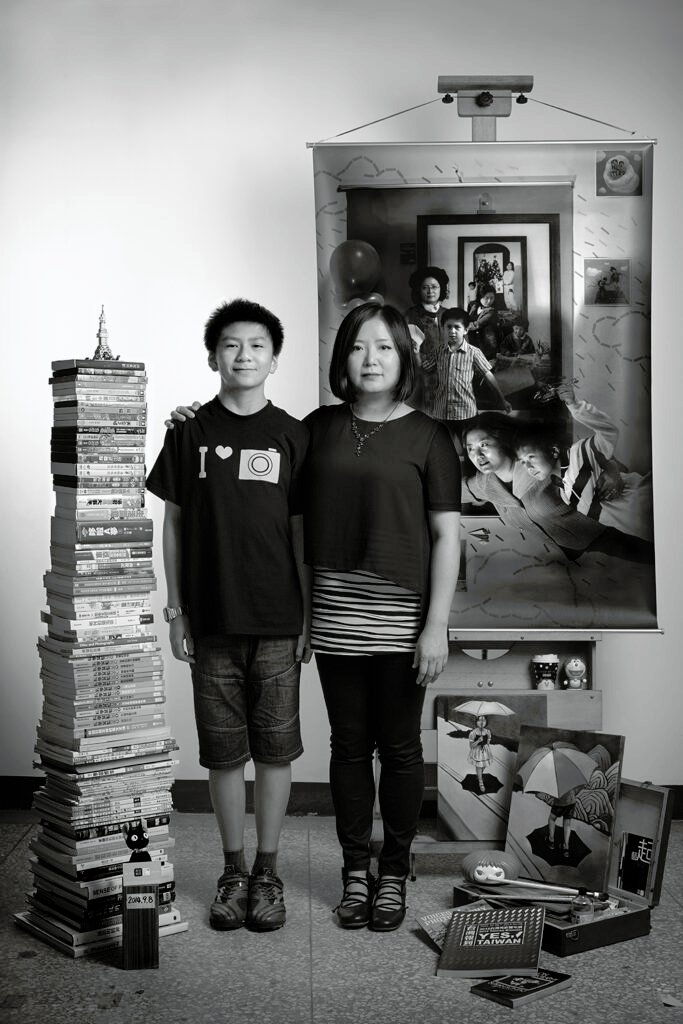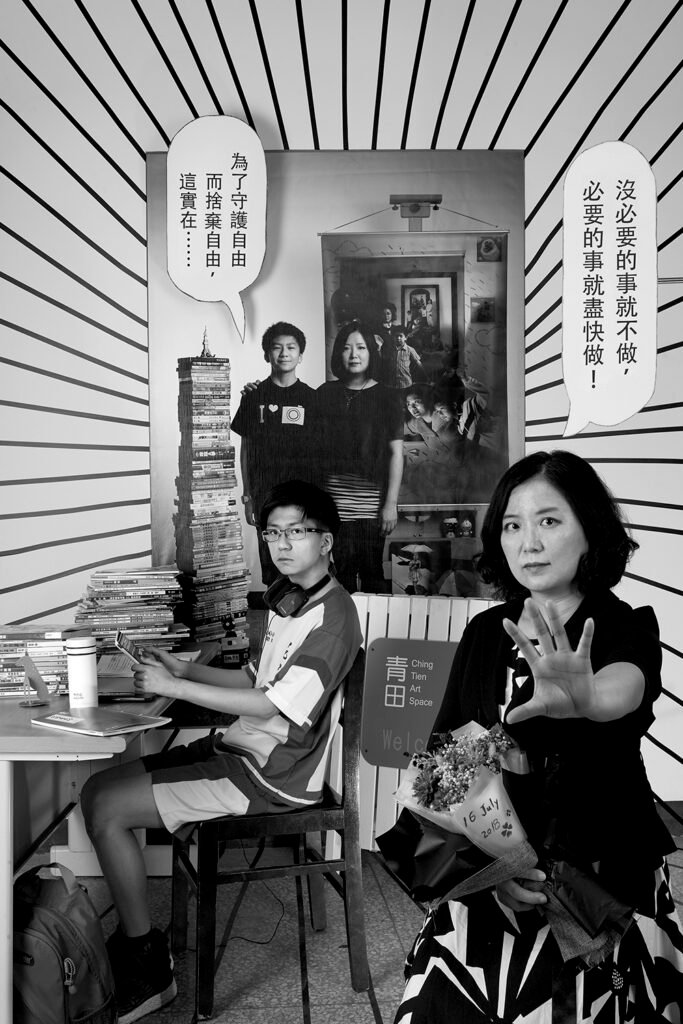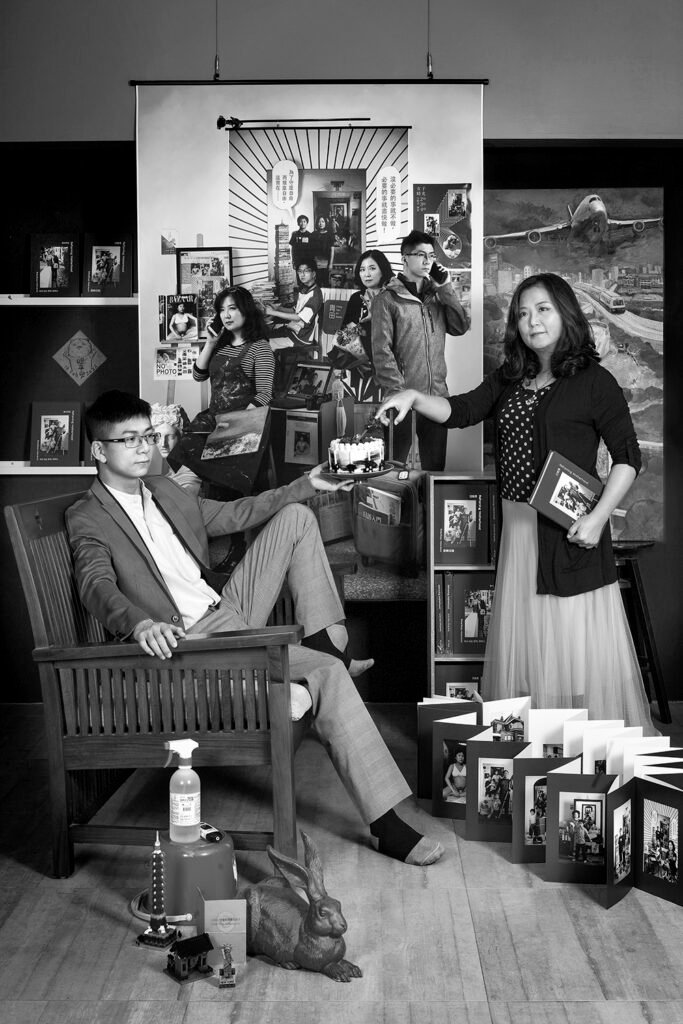Like an artist, the Mother is wise in her creation. The Mother not only creates a life, but also fosters a continuous matrix of experiences between Mother and Child. Motherhood is a long-term journey full of a myriad of complex feelings. This complexity cannot be expressed solely by saccharine images of Mother and Child, nor by the image of the Mother Incarnate willingly sacrificing herself for the sake of her children. All of these stereotypes of Motherhood are for me a tedious, unavoidable harangue which offers me no consolation. It is from this sentiment that I derive the original motivation for this series.
Since getting pregnant in 2000, I have grappled with physical pains of pregnancy and the fear of losing my sense of self. To address this, I turned to art as a way to preserve my sense of self during motherhood. From recording how in the beginning the Mother had lost her sense of self, to the notion of constantly creating, I sought to reconcile my dual roles as both Mother and artist, aiming to express a complex, diverse, and creative vision of Motherhood. I am confident that The Mother as a Creator series, which took twenty years to complete, not only demonstrates that the Mother can maintain her sense of self, but also shows that creativity can challenge many of the myths associated with Motherhood.
Artist Annie Hsiao-Ching Wang was born in Taipei, Taiwan in 1972. She received her PhD in Art from the University of Brighton in the UK and is currently an assistant professor at National Dong Hwa University. Her artworks have gone viral and prompted numerous reports and great interest abroad. “In these photos, Wang asserts her active role in the making of another life, reframing motherhood as a grand creative endeavor,” approved by The New Yorker. She also garnered appreciation from the BBC who said her works “change and transcend the cliché of motherhood.”
Wang is internationally renowned. In recent years, she has been invited to exhibit at various international photography festivals and large-scale art exhibitions in many countries. For example, she has participated in the Festival Images Vevey in Switzerland, the International Festival of photography in Australia, the AIPAD in New York and the Paris Photo in Paris. Moreover, her works are part of the collections at the Museum of Fine Arts Houston (Houston, U.S.), the Getty Center (Los Angeles, U.S.), the George Eastman Museum (Rochester, U.S.), Nelson-Atkins Museum of Art (Kansas City, U.S.), the Harry Rison Center (Austin, U.S.), the San Francisco Museum of Modern Art (San Francisco, U.S.), the Virginia Museum of Fine Arts (Richmond, U.S.), Victoria and Albert Museum (UK) and Tainan Museum of Art (Taiwan), among others.
Getxophoto is an image festival created and managed by Begihandi, that has been taking place in Getxo—Basque Country, Euskadi—since 2007. This festival is part of a cultural ecosystem with the aim of being more participatory, hybrid, committed and sustainable. This thematic Festival is conceived as a platform that addresses contemporary challenges through different proposals, from visual storytellers around the world, in an attempt to create spaces for reflection and establish a collective conversation. Getxophoto is characterized by the radical defense of public space (both physical and online). For this reason, most of its programme is composed of outdoor installations, highlighting, on the one hand, the link between the image and the environment and, on the other, generating a more horizontal and participatory relationship with the public.
This year, after PAUSE and PLAY, the festival will take the theme: REC. The abbreviation for Record, which usually appears as a red circle on our screens, refers to a register, to memory, to the story of the past, and to images as a witness to reality. The relationship between image and record is a central debate in visual studies, one that has been addressed by the great names of the theory of photography such as Walter Benjamin, Susan Sontag and Georges Didi-Huberman. But what is left of this debate today in relation to contemporary technologies? What is the difference between accumulating archives and telling a story? What is the future of the image—and of memory constructed through visual recording—in a world of extreme, immaterial, manipulable and seemingly infinite REC?
María Ptqk is the curator of GETXOPHOTO 2025.
